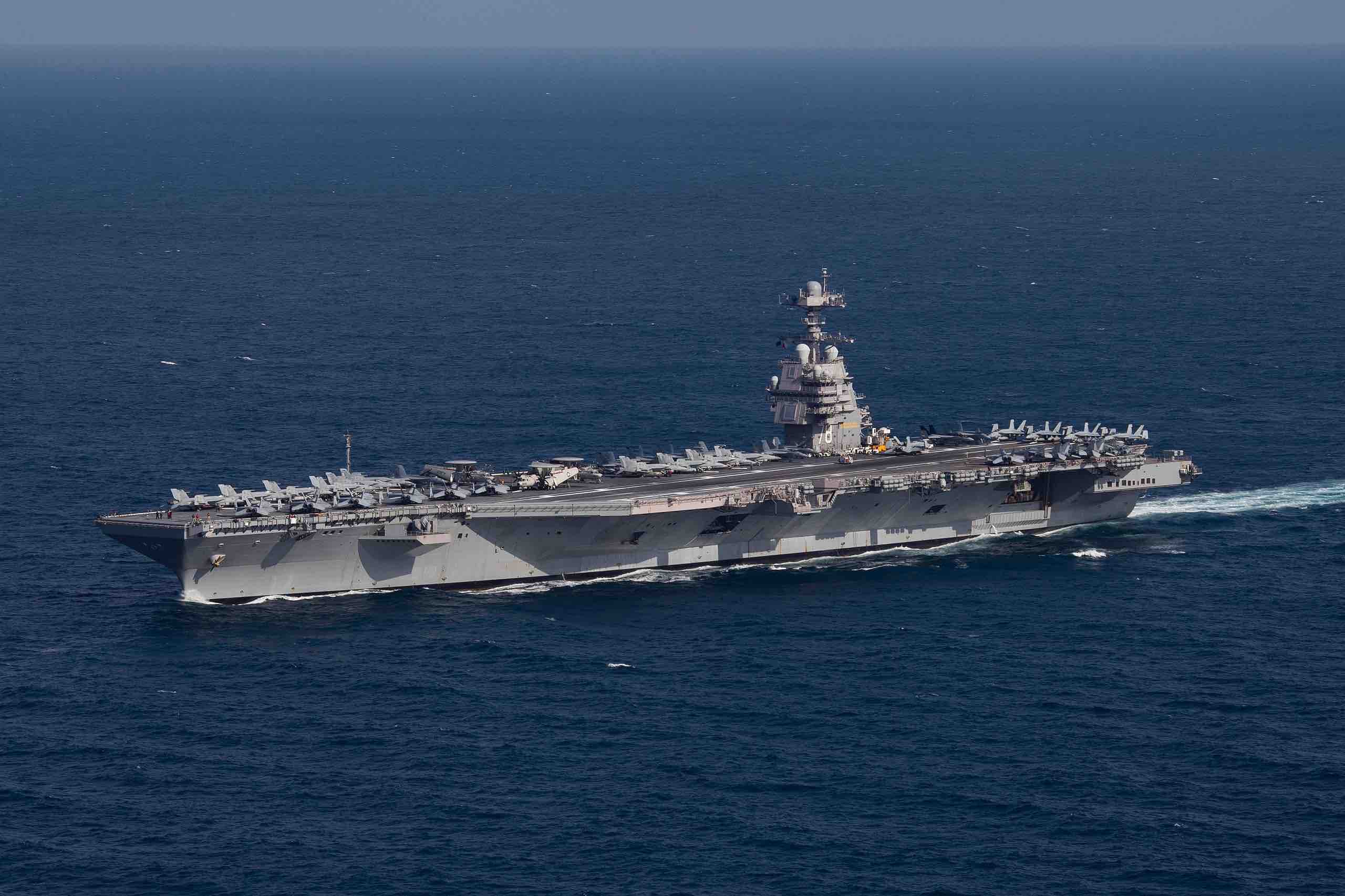


It marked a recalibration of U.S. strategic priorities in the Western Hemisphere — one that carries implications for Europe, the Atlantic archipelago and global maritime architecture alike.
The essence of the move is straightforward: the Ford strike group brings a formidable mix of capability to a region long treated as secondary in high-end naval warfare. The Janes account notes that the deployment will “markedly increase U.S. firepower in the region.” This is not simply a cushioned presence for surveillance or token maritime patrol. With the Ford carrier, its embarked air wing, escort destroyers, and myriad sensors and weapons systems, the U.S. is projecting robust capability deep into the Caribbean theatre.
The official line from the Pentagon: “The enhanced U.S. force presence in the SOUTHCOM AOR will bolster U.S. capacity to detect, monitor, and disrupt illicit actors and activities … that compromise the safety and prosperity of the United States homeland and our security in the Western Hemisphere.”
From Washington’s perspective the mission remains counter-narcotics and trans-national criminal organisations (TCOs). But the platform chosen is often reserved for peer-level or near-peer competition. That choice alone raises questions about what the U.S. considers the true horizon of threats in its backyard.
The Caribbean has long been a corridor for narcotics trafficking, human smuggling and other illicit flows. But the deployment suggests Washington now views the region not simply as a law-enforcement issue, but as a strategic domain. Analysts point out that the Ford’s capabilities — Tomahawk land-attack cruise missiles, SM-series air-defence missiles, and a full air wing of F-35Cs and F/A-18s — exceed what is typically required for tracking fast boats.
In effect, this deployment shifts the needle from interdiction at sea to a posture capable of strikes ashore or rapid escalation if necessary. That, in turn, has implications for allied navies, maritime security cooperation, and the balance of power in the Atlantic. Europe should pay close attention.
For Europe, and for the UK in particular, the move carries several messages. First: the Atlantic, long assumed to be a low-tension strategic theatre compared to the Indo-Pacific or the Arctic, is being re-elevated by the U.S. It remains allied territory, but now one in which the U.S. expects calibre of operations that mirror far-flung conflict zones.
Second: this redeployment reinforces the idea of hemispheric defence — where threats that originate in Latin America, the Caribbean or even the eastern Pacific can have transatlantic ramifications. Supply-chains, migration flows, criminal networks may ripple through Europe indirectly, and now the shows of force at sea reflect that interconnectedness.
Third: for the British Royal Navy and European partner navies, the vacuum to operate may shrink. The U.S. will expect partners to step up, share maritime domain awareness, and perhaps assume greater stakes in the Caribbean and Latin American littoral — not traditionally their marquee zone. Options for collaboration may open, but so may demands.
This recalibration also carries risks. Deploying such a high-value asset to the Caribbean runs the chance of over-extension. With the Ford extricated from its usual theatres (Mediterranean, Indo-Pacific) its presence invites questions of burden-sharing, sustainment and opportunity cost. A carrier is not easily replaced.
Moreover, signalling is double-edged: by using a carrier strike group for a region long mediated by the U.S. Coast Guard or partner navies, Washington may provoke unwelcome escalations — either diplomatic, with regional governments, or operational, with criminal groups or states under pressure. The diplomatic brush with Venezuela, Colombia and others is already complex.
Finally, the shift may alter alliance dynamics. European naval planners often assume a U.S. presence as a stabilising factor. But if the U.S. asserts more direct action from its own platforms, partners may find less room for independent maritime diplomacy and more expectation of alignment.
Deployment tempo and duration: Will the Ford strike group remain long in the region or be a short-term intensification? Duration will speak volumes about commitment and regional strategy.
Base and logistic footprints: Watch for indications of increased forward basing, local partner agreements or pre-positioning of naval assets in the Caribbean. That hints at a sustained shift, not simply a transient surge.
Regional response and policy effects: Latin American states will respond — diplomatically or militarily. How those responses play out will influence U.S.-Europe coordination — particularly in shared areas of interest like counter-narco operations and maritime security.
The deployment of the Gerald R. Ford carrier strike group to the Caribbean is more than a show of force. It represents a strategic signal: the Atlantic littoral remains a theatre of significance, evolving from peripheral zone to locus of high-end maritime power.
For European states, including the UK, understanding this shift is essential. It means adjusting assumptions about where naval power matters, aligning maritime diplomacy accordingly, and preparing for a Western Hemisphere that is once again front and centre in major-power calculation.
Main Image: U.S. Navy photo by Mass Communication Specialist 2nd Class Jackson Adkins.